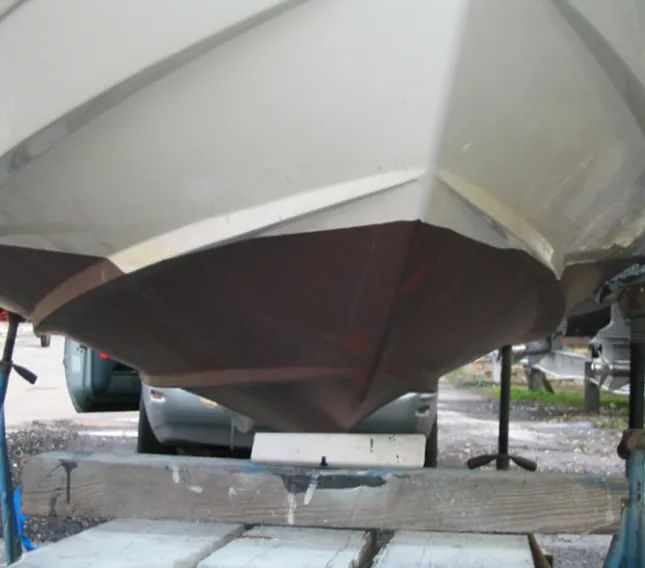Directions for
Application to Previously Coated Surfaces
(Read Completely)
The BKL® anti-fouling is a self-adhered bottom-coating laminate. The outer layer contains a concentration of cuprous oxide (Cu2O) and zinc pyrithione that protects the laminate itself from fouling. The second layer (middle layer) is a moisture barrier. The third layer also acts as a moisture barrier while providing excellent adhesion of the laminate to the hull surface and easy removal when necessary. The BKL® Anti-fouling coating is designed to adhere to gel coated surfaces, aluminum, and steel when applied as directed. No other use of the BKL® product is implied or recommended. Please contact the BoatKoat Laminates sales office at (352) 241-4656 for any additional questions concerning the use and/or application of the laminate.

General (Important):
- Do not apply to propellers.
- Do not apply to trim or leveling mechanisms.
- Make sure that hands/gloves are clean and free of contaminates.
- When applying to propeller shafts, always wrap opposite of normal shaft rotation.
- Apply the BKL® laminate from the back (stern/aft) of the boat at the waterline moving forward and down.
- When overlapping the laminate, one-half inch along any edge is sufficient.
- Apply twenty (20) pounds of pressure along the entire surface of laminate with a semi-hard sponge or rubber/wooden roller. Special attention should be paid to overlaps, seams, and edges. Remove large air pockets.
- Do not stretch the laminate.
- Never use lengths of the laminate that cannot be easily handled.
- Use scissors or razor to cut and trim the product prior to application. Do not mar the boat-bottom (gel coat) surface with any tool.
- Always remember to remove the protective plastic sheet prior to installing the next section of BKL®.
- Recycle protective plastic sheet appropriately.
- Use anti-fouling paint of your choice to coat areas that BKL should not cover.
Previously Painted/Surfaced Hulls:
The marine coating industry has provided consumers with numerous types of anti-fouling paint including epoxy, vinyl, ablative, and others. Each paint system utilizes the manufacturer’s recommendations for the transition coating, which is normally called a primer. The primer allows a specific type of coating to adhere appropriately to the boat bottom. The BKL system removes the requirement for a primer or transition coating in all applications. The BKL® laminate adheres extremely well to high surface energy products such as gel coat and bare metal. Since there are so many types of primers and anti-fouling paints, BoatKoat Laminates recommends that all previously applied coatings be removed down to a high surface energy layer or the original hull surface. Use proper health and safety protection when using tools & chemicals.
- Remove all algae and crustacean build-up. Pressure washing works well.
- Remove anti-fouling layers of old paint.
- Remove all corrosion and oxidation.
- Inspect the entire bottom surface for areas that require repair.
- Repair large areas that need re-surfacing.
- Open all blistered areas and allow to dry completely.
- Repair affected areas as needed and recommended by a professional in the field.
- The bottom finish must be as smooth as 80-grit surface preparation.
- Remove all grease, oil, dust, water, wax, and polish from the waterline down. Start by using soap and water. Rinse well with fresh water and allow the boat -bottom to dry completely.
- Use a clean cloth, liberally wipe the entire surface to be covered with denatured alcohol or a stronger solvent if necessary, and allow the hull to dry.
- If replacing previously applied BKL®, use only a “plastic” scraper to assist with the peeling process. Remove any adhesive residue with denatured alcohol, safety solvent if necessary, and/or pressure washing.
***REMOVE PROTECTIVE FILM***
The BKL® product comes with a protective plastic film that covers the anti-fouling layer. The film protects the coating from damage and protects the applicator from contact with anti-fouling products. The clear film MUST be removed to expose the anti-fouling surface after each section of the BKL® product is applied.
Helpful Hint: Start the film removal process at a corner of the applied laminate that will be covered by the next section of anti-fouling material.
